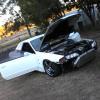R35 Faster Than Group A R32 Gtr!
Announcements
-
Similar Content
-
Latest Posts
-
Remember seeing a R32 GTR ( or could be GTS-T ) parked collecting dust near Yokohama. was parked there the whole time I was in Japan for ( 1.5years ), and looking at maps, still there... Wonder if the owner wouldve sold it, if an offer had been made....
-
Have seen a suburban with about an inch layer of dust on it. Couple of current corvettes. But not too much. It's funny, I have only seen 1x ford.(an escape at that) Multiple jeep wranglers.
-
By Dose Pipe Sutututu · Posted
A few fast stock BMWs, I'm not too far behind. -
I was 100% sure this would sell in seconds someone even remotely interested in it would sell. Probably way underpriced. Will you change your username to "The Hairdresser" now?
-
I agree with you, but pretty much _any car ever made_ without some splitters, nicer kit, wing, wheels, low is the difference between "ew" and "the nicest car you've ever seen". Applies to any Skyline too :p
-









Recommended Posts
Create an account or sign in to comment
You need to be a member in order to leave a comment
Create an account
Sign up for a new account in our community. It's easy!
Register a new accountSign in
Already have an account? Sign in here.
Sign In Now